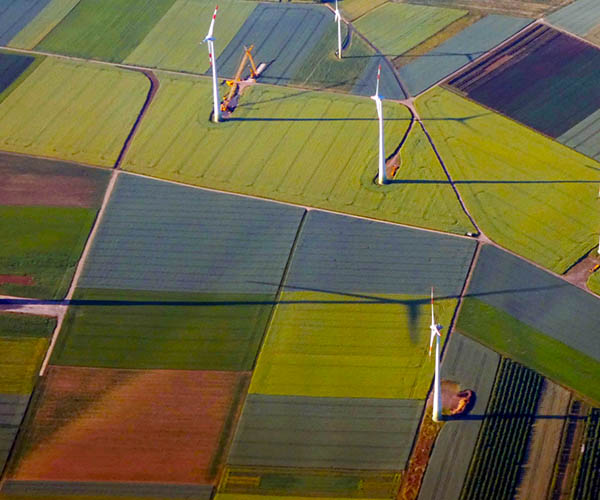Green Infrastructure can do it all, if only we let it
For years, FEMA has been criticized for deflating flood risk to prevent insurance rates from skyrocketing. In late June, First Street published a new report exposing hidden flood risk throughout the United States. Compared to FEMA risk data, First Street identified millions of additional properties at risk of flood damage. For example, FEMA’s report shows that only .5% of properties in Los Angeles are at risk for flooding. First Street’s analysis says this number is closer to 12%. This should come as no surprise if you’ve been tracking the increase and intensification of climate events. Further, properties facing flood risk are increasingly vulnerable because of aging and undersized grey infrastructure. This infrastructure was originally sized to collect and reroute stormwater away from properties. But, over the years, storm intensity has overwhelmed stormwater infrastructure.
Shifting from Grey to Green Infrastructure
In 1987, the Clean Water Act was amended to promote the use of green infrastructure to better manage stormwater runoff and flooding. Green infrastructure is defined as “… the range of measures that use plant or soil systems, permeable pavement or other permeable surfaces or substrates, stormwater harvest and reuse, or landscaping to store, infiltrate, or evapotranspirate stormwater and reduce flows to sewer systems or to surface waters.” This isn’t as technical as it sounds. Green infrastructure is any infrastructure that sinks, slows, and reuses stormwater runoff, like rain gardens, wetlands, green roofs, detention tanks, and creek restoration.
Green infrastructure can extend the life of grey infrastructure by reducing stress to stormwater pipes. It is also more cost effective than grey infrastructure, saving millions in construction costs. Philadelphia’s city-wide Green City, Clean Waters program is projected to save the city $8 billion over a 25-year implementation period. And, Chicago’s Green Alley Program is estimated to manage stormwater 3-6 times more effectively per dollar than conventional grey infrastructure. Another source of cost savings comes from reduced energy use with green roofs and tree plantings that can cast shade and temper urban climates. On top of this, green infrastructure creates jobs and provides public health benefits. For example, Ontario’s green infrastructure sector has created more than 120,000 jobs.
Despite the benefits of green infrastructure and the need for nearly 800 communities to reduce stormwater runoff under the Clean Water Act, green infrastructure is still a novelty for many. Without having the technical expertise to design and maintain green infrastructure, municipalities fall back on conventional grey infrastructure. To make the shift toward green infrastructure requires new incentives and structures that value community health and well-being… enter green infrastructure investments.
Financing a Better, Cleaner, and Healthier Future
Like many infrastructure assets, green infrastructure assets have social and environmental value that is difficult to quantify. New financing structures are finding ways to capture that value as indirect revenue sources. Research from the University of Texas estimates that property values can increase up to 20% with abutting or fronting parks. With this logic, tax incremental financing has been used to front the cost of green infrastructure. Incremental tax increases from rising property values can be captured to pay back initial construction costs. Similarly, property assessed clean energy (PACE) financing has been applied to green infrastructure, to be repaid by an annual assessment on property taxes.
Increasing green space, not only increases property values, it also decreases stormwater runoff and that indirect benefit can be quantified in flood insurance premiums and stormwater credits. To capture these multiple indirect value streams, cities and other infrastructure and property developers have issued their own green bonds. And, the idea of a water fund has been floated to ensure a revolving stream of investment towards green infrastructure for the purposes of clean water.
Realizing the Local Benefits of Green Infrastructure
Local communities directly benefit from green infrastructure and realize the costs of not installing green infrastructure. This is highlighted with First Street’s new flood risk map. Empowered to make local changes, one neighborhood in Portland used green infrastructure to revitalize the community. Living Cully is a grassroots program that builds parks and gardens as a way to create local wealth and reduce displacement. Through tremendous community engagement, Cully, Portland has become a rogue ecodistrict that has provided health benefits, created new jobs, and constructed green streetscapes that improved pedestrian safety. Harnessing the grassroots nature of this green infrastructure revolution, Living Cully turned towards crowdfunding.
But, Cully’s approach should not be unique. Crowdfunding has an opportunity to realize the local, social, and environmental value of green infrastructure. Communities can use crowdfunding, outside of traditional means, to finance and fund the delivery of better infrastructure, infrastructure that can be enjoyed by all and effectively reduce flood risks.
InfraShares is getting in on the action and working closely with developers to prioritize green infrastructure. While those local to these investments can take full advantage and benefit from the physical and financial returns, any investor should be able to support a cleaner and greener earth and realize this value.

